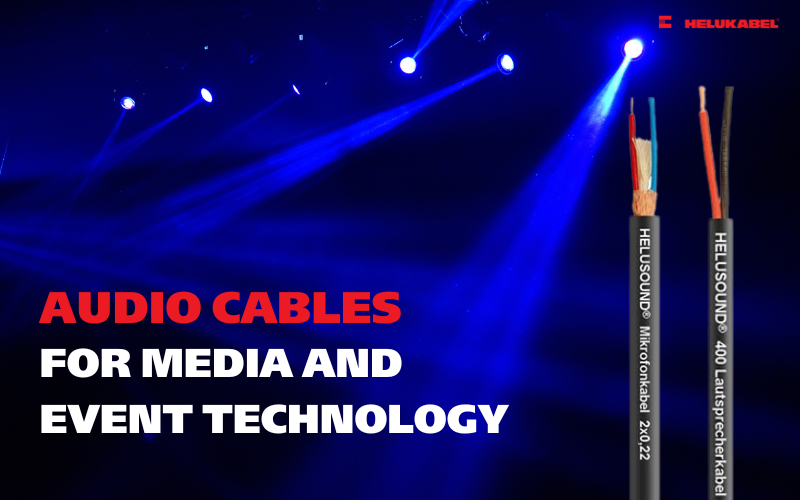Comparing analog audio cables and digital audio cables
Currently, many types of audio cables on the market are primarily designed for use in digital environments. But can digital audio cables perform as well as analog cables? Conversely, can analog cables be used in a digital environment? So, what are the differences between digital audio cables and analog cables? This article will help you explore the details of these two types of cables.
1. A glance at analog audio cables

1.1 What are analog audio cables?
Analog signals vary over time and are typically limited within a range of values (e.g., +12V to -12V), but there are countless values within that continuous range. Analog signals use a specific property of the medium to convey information, such as current flowing through a conductor. In electrical signals, the voltage, current, or frequency of the signal can be adjusted to represent information. Analog signals are often calculated responses to changes in light, sound, temperature, position, pressure, or other physical phenomena.
Analog audio cables are commonly used in audio and video applications. In analog signals, information is converted into electrical pulses with varying amplitudes. These electrical signals correspond to the light or sound they transmit, creating an almost perfect reproduction of the original signal. Analog audio cables deliver high-quality sound and image, capturing the subtle nuances of the source. However, they are susceptible to interference and signal degradation over long distances. It's a good idea to consider the necessary cable length before integrating these cables into your system.
>>See more: What are audio cables? Common types of audio cables?
1.2 Applications of analog audio cables
Musicians and sound engineers often prefer analog audio cables for their ability to reproduce the true sound of musical instruments. Analog cables are commonly used in devices such as televisions, radios, and some types, like VGA cables, are used to connect video equipment. Although analog cables are prone to interference and signal degradation, their continued use highlights their importance in applications where signal authenticity is prioritized.
2. A glance at digital audio cables

2.1 What are digital audio cables?
Digital audio cables use digital signals, where data is represented by binary numbers: 0 and 1. This binary code is transmitted in the form of on-off electrical pulses. Digital audio cables are highly resistant to interference and signal degradation because they distinguish between the presence and absence of a signal, rather than its amplitude or frequency. Types of digital cables, such as HDMI and DVI, are widely used in modern multimedia devices like computers, gaming consoles, and high-definition televisions. They deliver clear audio and high-resolution video, making them the top choice when quality is a key factor.
2.2 Applications of digital audio cables
Digital audio cables have many applications, such as USB (Universal Serial Bus), which connects peripheral devices like printers, scanners, and external storage to computers. These cables allow for fast data transmission and stable connections. With the advent of USB-C, digital audio cables can also transmit power. Many modern electronic devices rely on these cables for charging.
In media technology, digital signals are transmitted according to standards like AES/EBU, S/P-DIF, and DMX through digital audio cables. These cables connect devices such as scanners, lighting control panels, studio equipment, or other HiFi components.
3. Comparing analog audio cables and digital audio cables
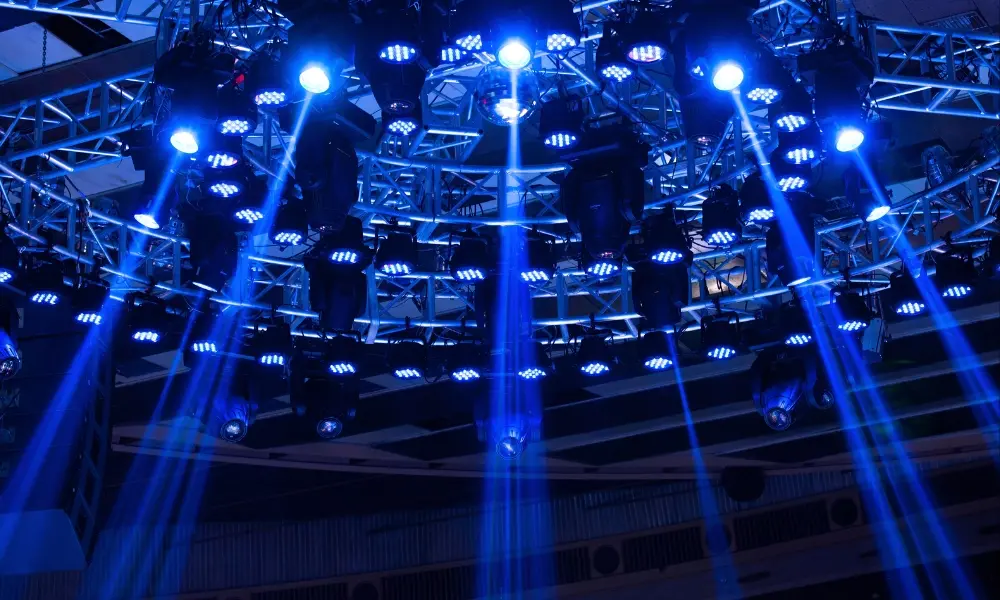
3.1 Advantages and disadvantages of analog audio cables
Analog audio cables have several notable advantages. First, since they use natural audio signals, many users appreciate their ability to preserve the authenticity of the original sound. Additionally, because analog technology has been around for a long time, there is a wide variety of products and accessories available, offering more options for users. Analog audio cables also use bandwidth efficiently and are generally easy for most users to understand.
However, the drawbacks of analog audio cables include their limitation to transmitting only one audio stream per channel at a time, as well as their susceptibility to interference and signal degradation over long distances. Furthermore, analog devices require hardware that is compatible with specific types of transmissions, and while their features can be upgraded, the underlying technology cannot be improved as easily as modern digital devices.
3.2 Advantages and disadvantages of digital audio cables
Digital audio cables have several significant advantages. Firstly, they allow for multiple audio streams to be transmitted simultaneously, while also embedding additional information such as device IDs, status buttons, and enhanced text messages into the same digital signal channel. Digital audio cables also help reduce bandwidth consumption and can be processed by standard antenna systems and existing infrastructure. The conversion of voice to digital signals helps minimize external background noise, which is especially useful in noisy production environments or outdoors in windy conditions. Furthermore, digital platforms support various new software applications and enable the simultaneous use of both digital and analog audio cables.
However, digital audio cables do have some drawbacks. They tend to be more expensive due to newer technology and advanced features. Digital signals are also susceptible to radio frequency (RF) interference, and if the interference is too high, the signal can become corrupted.
| Analog audio cables | Digital audio cables | |
| Advantages |
|
|
| Disadvantages |
|
|

3.3 Should users choose analog audio cables or digital audio cables?
The decision to use analog or digital audio signal cables depends on environmental factors and how the technology is utilized. Digital systems typically require more expensive components, but mid-range digital systems are often more reasonably priced. As digital technology becomes more widespread, the costs are expected to become even more affordable. Additionally, digital systems can easily integrate into the rapidly growing world of wireless IP networks.
Analog audio cables are best suited for situations where advanced features provided by digital technology are not required. In practice, many users of two-way radios only need a simple and reliable method of communication. Analog radios remain the most popular choice for those who do not need multi-feature devices or software upgrades.
4. HELUKABEL’s analog audio cables and digital audio cables
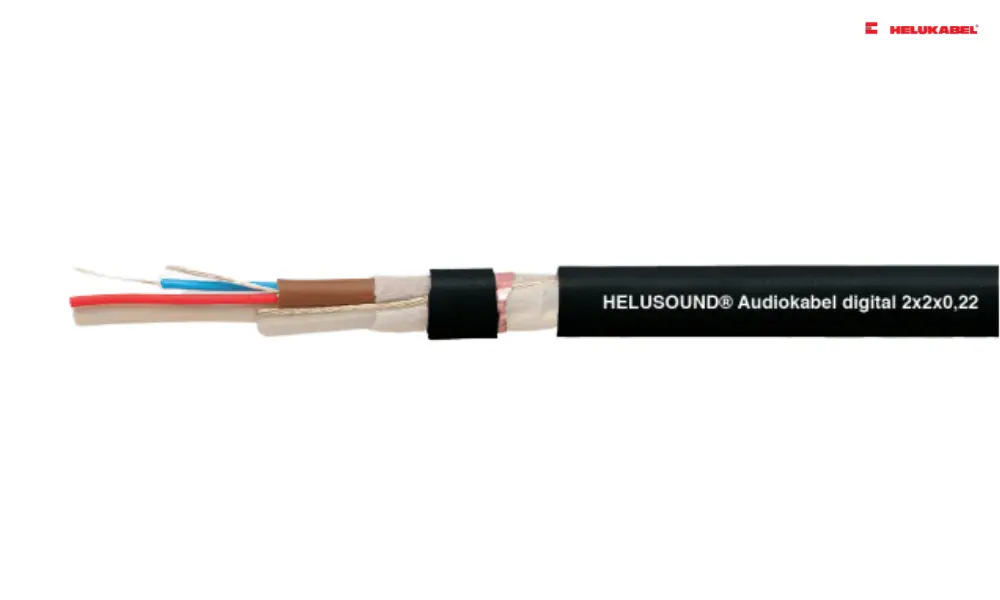
We HELUKABEL offer a wide range of audio cables for both analog and digital systems, including cables for speaker systems, lighting technology, instrument cables, and LED displays.
4.1 HELUSOUND® AUDIO CABLE DIGITAL TP PVC audio cables
This audio cable is made with tinned copper braiding, features PE insulation, and has a PVC outer sheath. It is characterized by a shielded braided pair, making it suitable for transmitting digital audio signals.

4.2 HELUSOUND® DMX+POWER audio cables
The surface of this cable features the "DMX" marking. DMX (Digital Multiplex) cables are used in lighting technology to control dimmers, spotlights, and effect devices. The HELUSOUND® DMX+POWER hybrid audio cable combines shielded lighting control cables and power supply cables. The DMX cables, protected by tinned copper braiding, are ideal for controlling lighting systems and audio mixers (with a characteristic impedance of 110 Ohms). It has a soft PVC insulation layer and is certified for both indoor and outdoor installations. Additionally, DMX cables can be used for transmitting audio signals, such as microphone cables, or as power cables for active speaker systems.
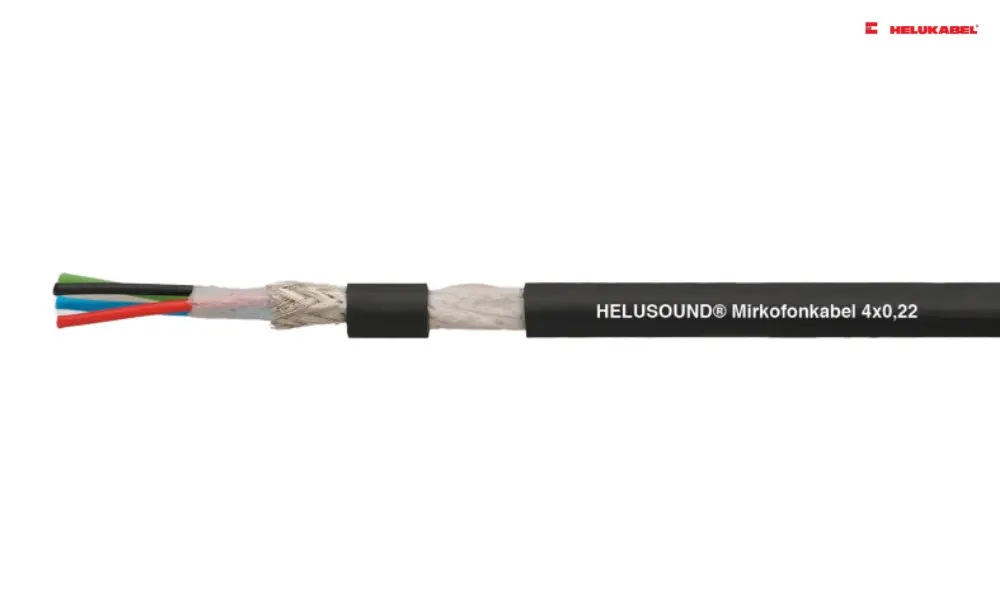
4.3 HELUSOUND® MICROPHONE CABLE S FRNC audio cables
This is a star-quad twisted audio cables designed for data transmission. The HELUSOUND® 4-core microphone cables come in two versions: one with a PVC outer sheath and the other with an FRNC (Flame Retardant Non-Corrosive) outer sheath, making it suitable for specialized applications thanks to its ground wire and braided shielding. This cable is commonly used as a stereo audio cable in professional studio and microphone applications. Additionally, it features easy stripping, which makes installation more convenient.
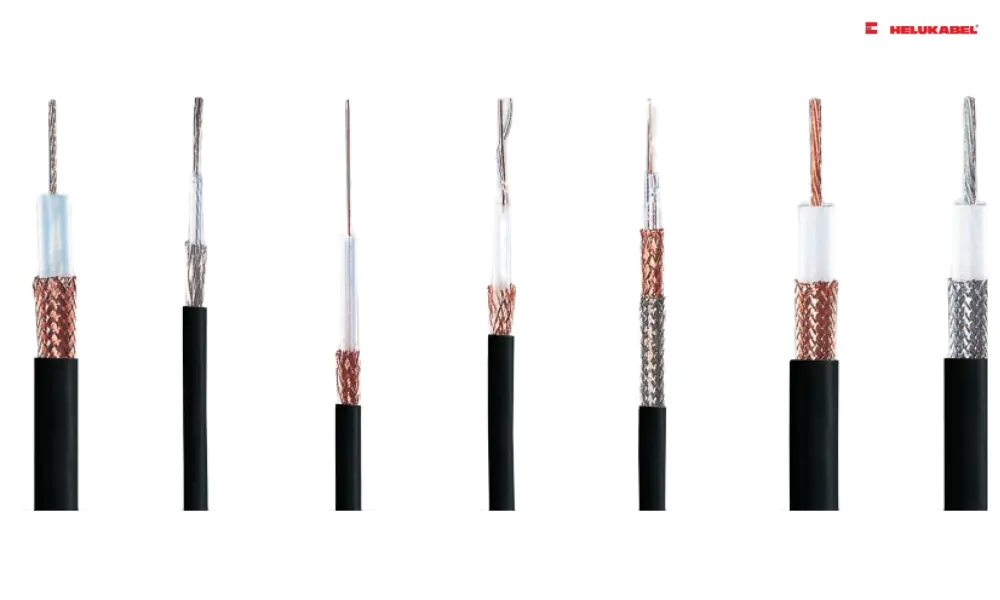
4.4 Halogen-Free RG coaxial audio cables
RG/U stands for "Radio Government, Universal." RG is a military designation for various types of coaxial cables specified in the MIL-C-17 standard. In this designation, R = Radio, G = Guide, and U = Utility.
HELUKABEL's FRNC (Flame Retardant, Non-Corrosive) digital coaxial cables come in multiple versions, such as 11 A/U, 58 C/U, 59 B/U, 62 A/U, 71 B/U, 213 U, 214 U, and more. Coaxial cables are used for transmitting high frequencies, particularly for transmitting and receiving devices, computers, radio, and TV transmission, where flame retardancy is essential in the event of a fire. With a wide range of mechanical, thermal, and electronic properties, coaxial cables can be utilized at frequency levels up to GHz, depending on the type of cable.
If you still have any concerns or questions, don't hesitate to reach out to HELUKABEL Vietnam's engineering team promptly for detailed assistance.
HELUKABEL® Vietnam
| Address | 905, Nguyen Kiem Street, Ward 3, Go Vap District, Ho Chi Minh City 700000, Vietnam |
| info@helukabel.com.vn | |
| Hotline | +84 28 77755578 |
| Website | www.helukabel.com.vn |
| Discover our products and place orders | Tiki | Product finder |
| Follow us on | Facebook | LinkedIn | Instagram | Youtube | Zalo | WhatsApp | Tiktok | Spotify |

